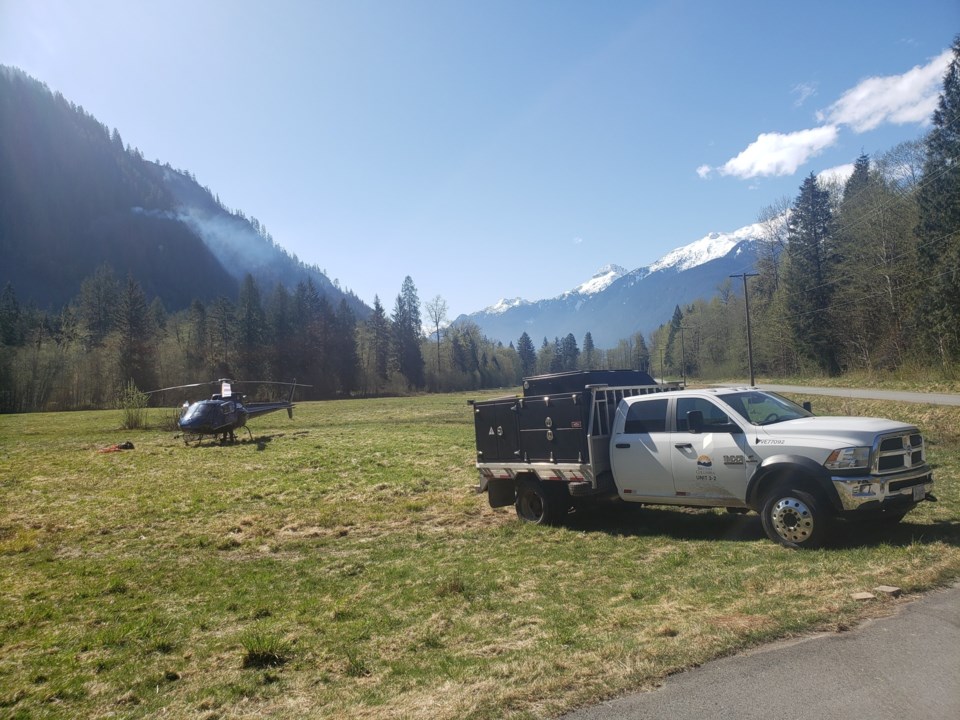Throughout the day, crews have been conducting more thermal scans and targeting leftover hot spots from the Squamish Valley fire.
In the late afternoon of April 21, fire information officer Dorthe Jakobsen of the BC Wildfire Service said that crews were making good progress on snuffing out the rest of the fire.
BC Hydro teams were continuing work fixing infrastructure in the area, and a helicopter was helping fire crews douse water in areas harder to access by ground, she said.
The upcoming rain showers in the valley is expected to help things out, Jakobsen added.
The Magee Road blaze, which still spans 203 hectares, remains classified as “being held,” meaning it will likely not grow.
In the morning, the Wildfire Service said that much of the work at this stage of the fight is fairly repetitive.
“People get quite anxious about getting more information, but the reality is it can be very monotonous in how we describe it, because the work doesn’t change over a number of days,” said Marg Drysdale, a fire information officer.
“It’s a lot of really hard work digging, turning over ground, and it is just getting to those hot spots and extinguishing. It’s what we call mopping up. It’s probably the biggest per cent of the work on these kinds of fires, where they go in and they basically hit all the hot spots, do all the patrolling, make sure there’s no visible smoke, and they may do this for days at a time.”
Drysdale said 36 firefighters, a helicopter, three excavators and two danger tree fallers are on the scene today.
Also aiding in the fight will be the upcoming weather patterns.
Drysdale said that light and patchy showers will be coming in during the next day or two.
About five to 10 millimetres of rain may fall, she said. The crew might be downsized, depending on how rain falls.
An evacuation alert remains in effect for Squamish-Lillooet Regional District properties in the area.
It includes residents on Squamish Valley Road, from the Pilchuck Bridge to the northern end of Squamish Valley Road, on both sides, and encompasses all side roads in this area.
The checkpoint at the 12-kilometre mark has been removed, said Drysdale, but people are still being asked to stay out of the area.
BC Hydro is working along the road with danger tree fallers, she said.
“It just makes it so much easier for everybody if we don’t have a lot of traffic in the area,” Drysdale said.



